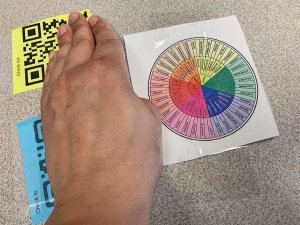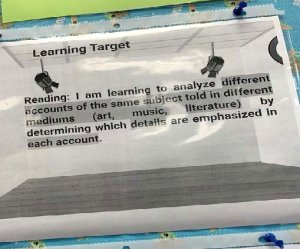4 Elementary School Strategies That Work in High School
Teachers can cultivate a positive learning environment by adapting pedagogical strategies that are familiar to students.
Your content has been saved!
Go to My Saved Content.In teacher preparation programs, high school educators are taught to focus on their content areas, and there isn’t as much emphasis on pedagogical structures. At times, it prevents instruction from being academically or socially differentiated.
Elementary structures can be used to really rethink learning in ways that create classroom communities that are equitable and provide opportunities for rigor and engagement at the high school level. These same structures can be adapted to engage students at an academically appropriate level for high school students.
We know that more emphasis on social and emotional learning (SEL) in all grade levels is important. With 45- to 50-minute periods in high schools, the traditional course of action has been to have the first week of school include a couple of icebreakers and then move into syllabi, rules, and instruction. SEL can’t just be one and done in grades 9–12. It can be infused into all learning.
1. Adapt the Feelings Check-In
As elementary teachers use daily smiley face check-in prompts, I created two different daily Quick Response (QR) codes, one where students can check in and another where they can check out. Under the codes, I keep a “feel wheel” that students can use to help them find language that describes how they’re feeling at that moment of the day.

After they scan the QR code with their phones, students click on how they’re feeling and might type in anything they feel like I need to know. If a student’s phone doesn’t work for this, I have paper versions for them to complete.
Our check-out QR code tells me how they think the class did on their social contract (student-created class expectations) and whether or not we worked toward the learning target that day. From this tool, I’ve learned so much about my students (that I wouldn’t know otherwise) and built relationships with them.
2. Have Class Jobs or Tasks for Students
In my classroom, students have jobs, and they rotate every quarter: paper management, affirmation production lead, social contract consultant, academic consultant, and classroom greeter. At first, students found this very odd, but now after about a month of classes, they have embraced this as really a way to be included in the classroom.
There have been days when I’ve forgotten to remind them of their tasks, and they tell me that they need to introduce a new student to the social contract and pass out paper and equipment to others.
3. Create Anchor Charts for Learning Concepts
Anchor charts are typically created in elementary classrooms through teacher-led instruction—where the teacher does all the writing and all of the speaking. I thought that this structure would be effective for high school students if they lead the process of creating anchor charts in order to reach the literature standard of identifying themes in a text.
For our unit, I had students unpack the theme of children’s books. They had to distinguish the topic, moral, and main idea utilizing a design that also supported the theme of the book using Canva. Students drove the content and the design of our “classroom anchor charts” while learning how to use a graphic design application that may help them in their future workplace.
After they completed the charts, I printed and laminated their creations to support other students’ understanding of the concepts that their peers illustrated. I’ve also had students create anchor charts and map out concepts in the form of sketch notes to support their own learning and help each other. I truly believe that if students have to create a product to teach a concept, they learn it better.
4. Make Classroom Word Walls
For students in grades 9–12, word walls are a helpful tool. In my classroom this year, I’m utilizing student-created word walls in order to support the unpacking of new vocabulary. We look at the important words in our learning targets that students need to know, and we expand our knowledge on them.

At the beginning of each unit, I introduce students to learning targets that are derived from the reading and writing Common Core standards. In order for students to reach the target, it’s critical for them to know the vocabulary of the target, and that supports their understanding of the skills they need to build.
After I spend five to seven days explaining the target vocabulary, at the beginning of a unit, I assign each student a word, and they use it to draw word art. Then, I have my students tell me which versions they think should go above our learning target wall in the classroom. I continue to reference the word wall as we continue on through the unit. I noticed that as students were building their skills in understanding different concepts, they also continued to reference the word wall.
High school classrooms can be colorful, engaging, rigorous, and inclusive. The days of students just listening to teachers lecturing are gone; they benefit from the chance to engage in learning that is tactile and not behind a screen. As high school teachers, we can remind ourselves that we are both content and pedagogical experts. Incorporating engaging elementary structures in high school is the post-Covid instructional reimagination that students need, deserve, and helps them thrive.
